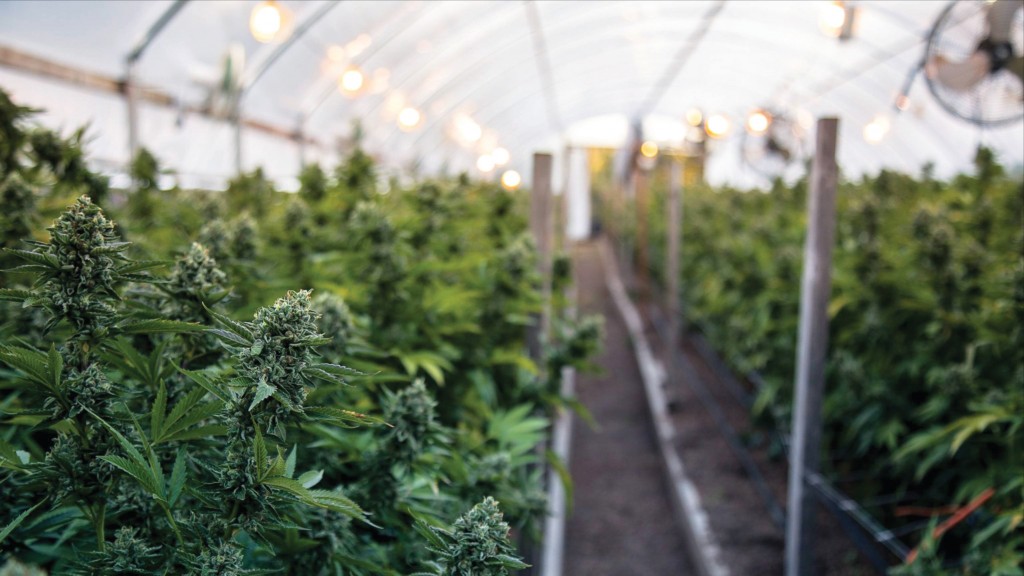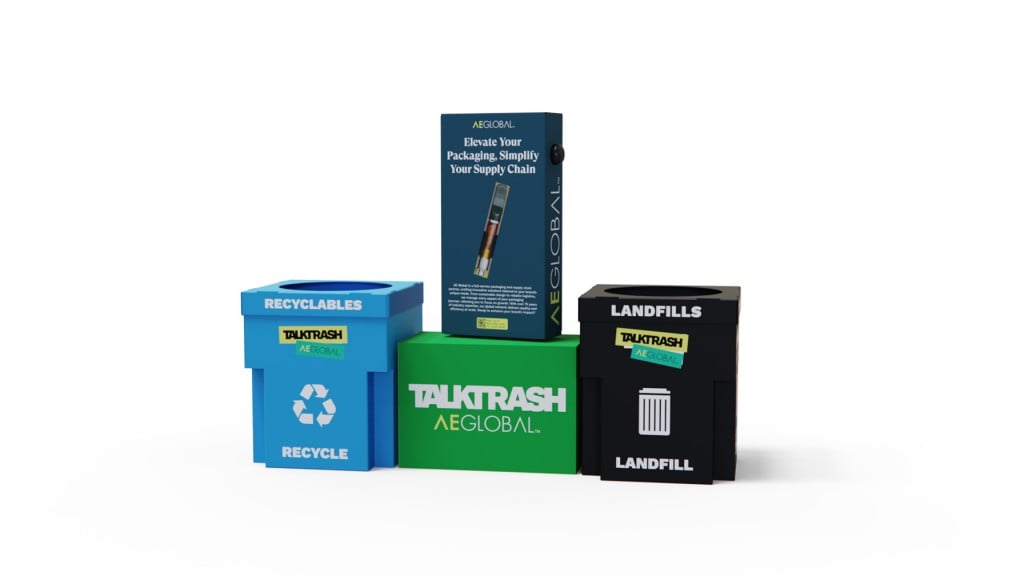The highs and lows of cannabis waste management regulations
Deconstructing the rules so far for dealing with a new waste stream that is literally growing like a weed

Cannabis cultivators and processors have been navigating licensing hurdles in an effort to increase production and profit from that rising demand. But not without challenges.
CannTrust, a federally licensed and regulated cannabis producer operating a harvesting facility in Ontario recently had its license suspended by Health Canada for growing cannabis in five unlicensed rooms at its facility.
But the prosecution failed. According to the CBC's reporting on the trial in 2020, "The prosecution of three businessmen caught up in one of Canada's most spectacular cannabis-industry flameouts suffered its own collapse on Wednesday, as lawyers for the Ontario Securities Commission (OSC) moved to withdraw all charges mid-trial.
But even defeat didn't come easy for the prosecution: Defence lawyers for former CannTrust Holdings officials Peter Aceto, Eric Paul and Mark Litwin refused to merely have the charges dropped and held out for full acquittals for their clients."
"After careful review of the evidence during the trial, we are of the view that as charged, there is no reasonable prospect of conviction," OSC lawyer Dihim Emami told the court. He asked for more time to consider the defendants' request for acquittals, however, saying it had only been presented to him minutes earlier."
With over half of Canadian licenses for cannabis cultivation and/or processing issued to operators in Ontario, it is critical for facility owners and operators to be aware of their legal obligations and liability. Cannabis cultivation and processing produces solid, liquid and airborne waste, with each type of waste raises its own legal concerns.
What follows is an overview of how solid cannabis waste is currently regulated under the Canadian Cannabis Act and Ontario's environmental legislation.
Federal regulation of solid cannabis waste
Cannabis is regulated at the federal level in Canada by the Cannabis Act and Cannabis Regulations.
The Cannabis Act defines cannabis as any part of a cannabis plant (e.g. flower, leaf and seed) including the phytocannabinoids produced by the plant, and any substance that contains any part of a cannabis plant. This definition of cannabis excludes the roots, non-viable seeds and mature stalks of the plant. Any cannabis material that falls within this definition must be dealt with in accordance with the Cannabis Act and the Cannabis Regulations.
Unfortunately, within the Cannabis Act and the Regulations, there is no guidance for producers or licence holders about environmental requirements. Despite establishing a stringent regulatory regime for growing facilities, Canada's Cannabis Regulations do not directly address disposal of cannabis waste and there are no prescribed methods for disposal. However, the Cannabis Regulations do regulate the destruction of cannabis using regulation mirrored on ‘controlled substances' and narcotic legislation.
Licensed cannabis processors and cultivators are authorized to destroy cannabis by methods that: (i) do not expose any individual to cannabis smoke or vapour, and (ii) meet all applicable federal, provincial and municipal environmental protection legislation.
Destruction can occur on- or off-site, but Canadian federal regulations require that destruction be completed in the presence of a qualified witness, with security clearance. The regulations also include destruction record-keeping obligations requiring dates, pre-destruction weight, method and identification of witnesses.
What amounts to destruction of cannabis is currently undefined in the federal regulatory framework. Under the previous regulatory framework for medical marijuana, cannabis was considered destroyed "when it is altered or denatured to such an extent that its consumption and propagation is rendered impossible or improbable."
Since the term cannabis includes the phytocannabinoids produced by the plant, there was (and likely remains) a requirement to destroy the phytocannabinoids themselves – not just the physical plant material.
Provincial and municipal regulation of solid cannabis waste
With little guidance from the federal government, much of the regulation of cannabis waste and its destruction is left in the hands of the provinces.
What is clear from the federal Cannabis Regulations is that cannabis destruction methods must comply with all federal, provincial and municipal environmental protection legislation applicable to the location where the cannabis is destroyed.
Cannabis cultivators, processors and property owners must be aware of provincial environmental laws governing emissions, waste and water use. In Ontario, these include laws set out in the Ontario Water Resources Act, Pesticides Act, Nutrient Management Act (2002) and Environmental Protection Act (EPA). Failure to comply with these laws, or obtain the appropriate permit (an Environmental Compliance Approval or "ECA"), can result in regulatory Orders and prosecutions.
In Ontario, the "Kitty Litter Method" (explained below) and landfilling are currently acceptable methods for disposing and destroying of solid cannabis waste biomass. However, with Ontario's new Food and Organic Waste Framework proposing to ban food and organic waste from landfills by 2022, cannabis processors and cultivators will need to look to alternative methods for disposing of their cannabis waste.
Options for cannabis waste management
There is little guidance from the federal government on what it currently considers an acceptable method of destroying cannabis. One cannabis destruction method previously endorsed by Health Canada is referred to as the Kitty Litter Method.
The Kitty Litter Method is described in a Health Canada Information Bulletin from 2016 which provides guidance to persons producing cannabis for their own medical purposes. It recommends rendering cannabis unfit for use or consumption by blending the cannabis with water and mixing it with cat litter (for odour control) before disposing of it. The destroyed cannabis can then be placed in the garbage and sent to the landfill.
More recently, the Alberta Government released an information sheet to provide "proper management and disposal procedures for cannabis waste. . ." in Alberta. This document provides limited guidance for liquid concentrate waste, as well as compostable vs. non-compostable mixed waste. This document also permits the Kitty Litter Method, requiring a mixture composed of at least a 50 percent non-cannabis waste.
The Kitty Litter Method renders the consumption of waste cannabis ‘impossible or improbable.' While the cannabis slurry generated by the process is unusable as a narcotic, the phytocannabinoids in the slurry remain intact, which impairs potential secondary use of the waste cannabis biomass. It's not surprising, therefore, that the only disposal option for the Kitty Litter Method is landfilling.
Consider also the heavy cost to producers of purchasing one ton of cat litter for every ton of cannabis waste to be destroyed. Plus, there is the additional cost of sending two tons of material to landfill instead of one.
Incineration remains an option for destroying cannabis, if the process does not expose any individuals to cannabis smoke or vapour. Solid cannabis waste, including tree branches, leaves and brush, will likely meet the definition of woodwaste, in which case a waste ECA may be required. There are limited exemptions that may apply for smaller incineration operations, with limited storage.
When incinerating solid cannabis waste, producers and cultivators may also require an air ECA to address particulate matter. Incineration may also trigger local municipal regulatory requirements, including fire and building code considerations.
A destruction method consistent with Ontario's Food and Organic Waste Framework, would be to compost solid cannabis waste. This method involves grinding, mixing and incorporating cannabis waste with equal parts compostable mixed waste to render the cannabis unfit for consumption. The cannabis waste could then be composted on-site or transported to an authorized composting facility for re-use in agriculture. We have been advised by at least one composting organization that its on-site composting technology de-natures the phytocannabinoids in cannabis waste to non-detect levels.
On-site composting may require an ECA for waste. The EPA requires operators of waste management systems and waste disposal sites to obtain a waste ECA. However, solid cannabis waste may be exempted from the requirement for an ECA if it is considered "agricultural waste."
It is currently unclear whether solid cannabis waste meets the agricultural waste exemption, and so, a waste ECA may be required.
Solid cannabis waste may also be destroyed on- or off-site with the help of an anaerobic or aerobic digester. Anaerobic digesters allow microorganisms to break down solid cannabis waste in an oxygen-free environment. Similarly, aerobic digesters use naturally occurring microbes to digest solid cannabis waste in an oxygenated environment. We have been advised that both technologies have been shown to significantly reduce phytocannabinoids to non-detect or near-non-detect levels, and both can produce a biomass product ready for agricultural use. It is notable that digesters often produce biosolid output, air emissions and liquid waste, meaning ECAs may be required for all three outputs depending on the manner in which they are discharged into the environment.
Subject to certain conditions, crop waste can be applied to land in Ontario. A waste ECA is not required for solid waste plant material that has been processed without the use of chemicals if it is transferred for direct transportation to a farm operation to be used to improve the growing of crops. If solid cannabis waste does not meet this exemption, ECAs or non-agricultural source material plans may be required in order to spread solid cannabis waste on agricultural land. This method could be used to dispose of biosolid output from digesters or other solid cannabis waste that has been rendered unfit for consumption.
Going forward from here, Cannabis cultivators and processors must pay close attention to applicable environmental laws. Failure to comply with laws can result in prosecutions and fines. Those seeking to establish new cannabis operations should seek legal advice with respect to cannabis waste management in order to reduce exposure to environmental liability.
Richard Butler is partner, and Raeya Jackiw, associate, at Willms & Shier Environmental Lawyers LLP in Toronto.
This article was originally published in the November/December 2019 edition of Recycling Product News, Volume 27, Number 8.


